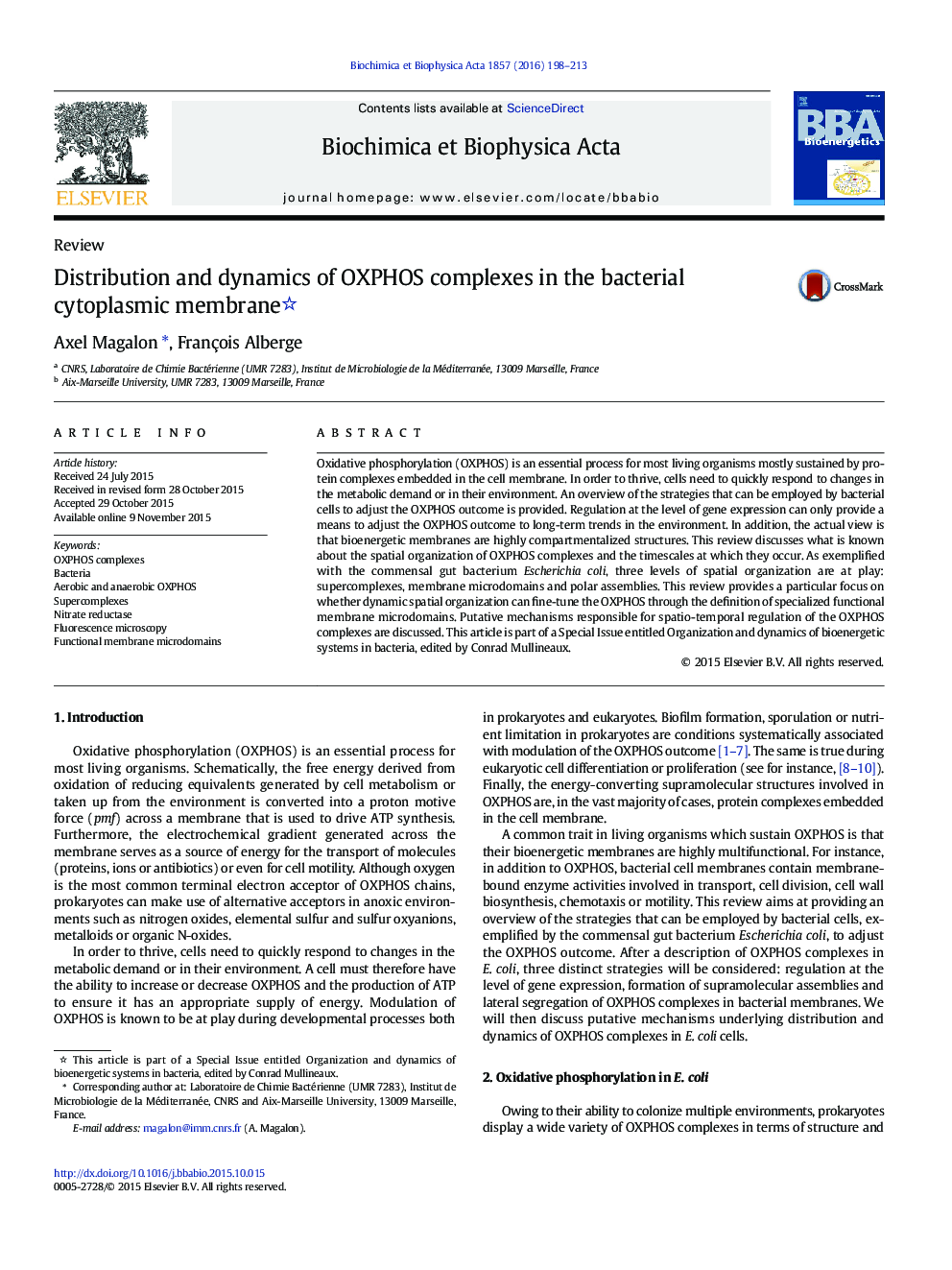| Article ID | Journal | Published Year | Pages | File Type |
|---|---|---|---|---|
| 10795305 | Biochimica et Biophysica Acta (BBA) - Bioenergetics | 2016 | 16 Pages |
Abstract
Oxidative phosphorylation (OXPHOS) is an essential process for most living organisms mostly sustained by protein complexes embedded in the cell membrane. In order to thrive, cells need to quickly respond to changes in the metabolic demand or in their environment. An overview of the strategies that can be employed by bacterial cells to adjust the OXPHOS outcome is provided. Regulation at the level of gene expression can only provide a means to adjust the OXPHOS outcome to long-term trends in the environment. In addition, the actual view is that bioenergetic membranes are highly compartmentalized structures. This review discusses what is known about the spatial organization of OXPHOS complexes and the timescales at which they occur. As exemplified with the commensal gut bacterium Escherichia coli, three levels of spatial organization are at play: supercomplexes, membrane microdomains and polar assemblies. This review provides a particular focus on whether dynamic spatial organization can fine-tune the OXPHOS through the definition of specialized functional membrane microdomains. Putative mechanisms responsible for spatio-temporal regulation of the OXPHOS complexes are discussed. This article is part of a Special Issue entitled Organization and dynamics of bioenergetic systems in bacteria, edited by Conrad Mullineaux.
Related Topics
Life Sciences
Agricultural and Biological Sciences
Plant Science
Authors
Axel Magalon, François Alberge,
